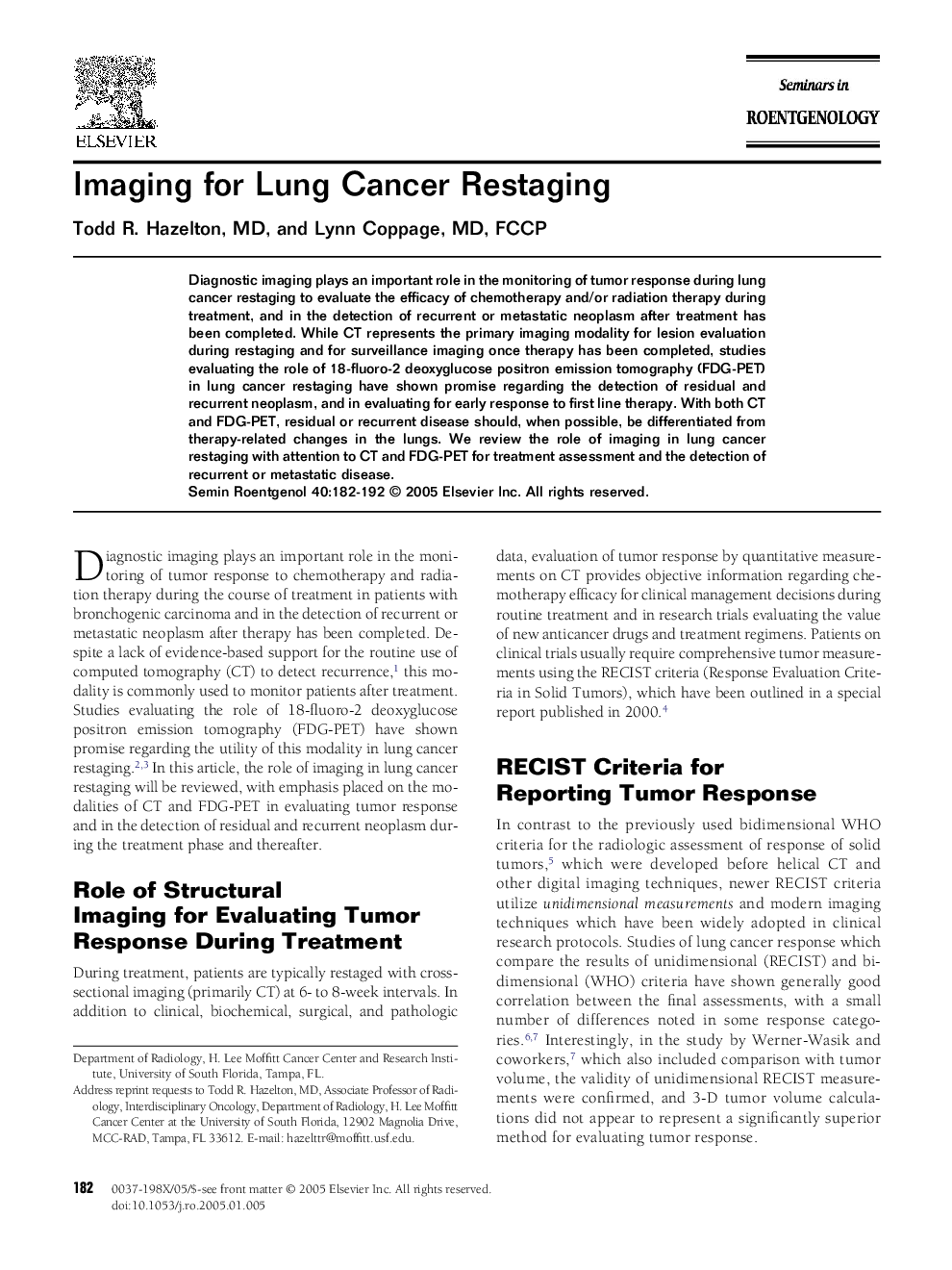| Article ID | Journal | Published Year | Pages | File Type |
|---|---|---|---|---|
| 9086442 | Seminars in Roentgenology | 2005 | 11 Pages |
Abstract
Diagnostic imaging plays an important role in the monitoring of tumor response during lung cancer restaging to evaluate the efficacy of chemotherapy and/or radiation therapy during treatment, and in the detection of recurrent or metastatic neoplasm after treatment has been completed. While CT represents the primary imaging modality for lesion evaluation during restaging and for surveillance imaging once therapy has been completed, studies evaluating the role of 18-fluoro-2 deoxyglucose positron emission tomography (FDG-PET) in lung cancer restaging have shown promise regarding the detection of residual and recurrent neoplasm, and in evaluating for early response to first line therapy. With both CT and FDG-PET, residual or recurrent disease should, when possible, be differentiated from therapy-related changes in the lungs. We review the role of imaging in lung cancer restaging with attention to CT and FDG-PET for treatment assessment and the detection of recurrent or metastatic disease.
Related Topics
Health Sciences
Medicine and Dentistry
Radiology and Imaging
Authors
Todd R. MD, Lynn (FCCP),
